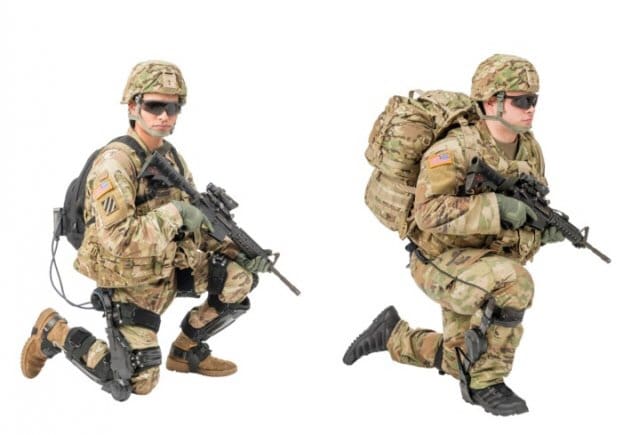NATICK, Mass. — David Audet, chief of the Mission Equipment and Systems Branch in the Soldier Performance Optimization Directorate, at the Research, Development and Engineering Command’s Soldier Center, is gearing up his team for the next User Touch Point activities to explore exoskeleton options later this month.

“As we explore the more mature exoskeleton options available to us and engage users, the more we learn about where the possible value of these systems is to Army operations,” said Audet.
“Before the Army can consider investing in any development above what industry has done on their own, we need to make sure that users are on board with human augmentation concepts and that the systems are worth investing in. The Army is not ready yet to commit. NSRDEC [RDECOM Soldier Center] has a lead role in working with PEO-Soldier and the Maneuver Center of Excellence, Fort Benning, to determine whether or not a longer-term investment in fielding new technologies is justifiable. But this is what we do best. We find the options and create the partnerships to help us figure it out.”
Recent media has brought a lot of attention to the Lockheed Martin Missiles and Fire Controls, or LMMFC, ONYX, a Popular Science award recipient for 2018.
As innovative as it is, and with all the attention on the Soldier Center’s $6.9 million Other Transaction Agreement (OTA) award, it’s easy to get caught up in the moment and lose perspective of the overall work the Soldier Center is actually doing.
Out of the 48-month phased effort, roughly $680K has been put on the LMMFC OTA — currently focused on having enough systems to take to the field for operational evaluation. Although performing, the technology has yet to prove itself in a full operational exercise before moving forward. And while LMMFC is highly confident in their product and continues to invest their funding on further developing the system for commercial use, the Soldier Center is also looking at other technologies.
Located in Maynard, Massachusetts, Dephy, Inc.’s ExoBoot is another entrant in the program. The Dephy ExoBoot is an autonomous foot ankle exoskeleton that was inspired by research done at the Massachusetts Institute of Technology under collaboration with the Army. It is currently under consideration for evaluation during the third and fourth quarter of 2019. Brigadier General David M. Hodne has worn the ExoBoot during Soldier Center program updates and is quite intrigued by the capability. User feedback will determine if both systems move forward and under which considerations.
“Under ideal conditions, we would favor a full development effort,” said Audet. “However, given the push for rapid transition and innovation, we can save the Army a lot of time and money by identifying and vetting mature technologies, consistent with the vision of the Army Futures Command, or AFC.
“In order to achieve the goal of vetting and providing recommendations, NSRDEC [the Soldier Center] and PEO-Soldier are strong partners, teamed up to work with third party independent engineering firms such as Boston Engineering out of Waltham, Massachusetts. The engineering analysis of systems will provide an unbiased system-level analysis of any of the technologies under consideration, following rigorous analysis of the capabilities as they exist, the operational parameters provided by users and assessment of how humans will use and interact with the systems.”
“We are confident products will succeed or – at a minimum – fill a gap we have not been able to address by any other materiel or training means,” said Audet.
“We will be prepared to transition, but we know there is a road ahead before we get there. We aren’t committing to anything more than to bring the systems to a demonstration and educate the community at large on what these preliminary technologies can offer. In the meantime, we add a layer of third party independent analysis as a reassurance policy that we are mitigating bias and staying laser focused on user needs and meeting the demands of the future warfighting landscape.”

